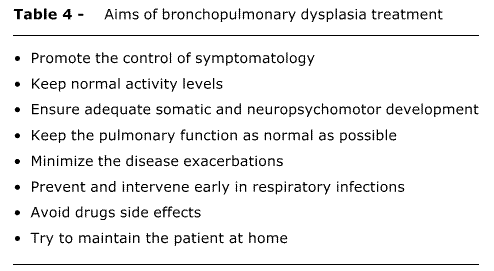OBJECTIVE: To present a wide-ranging review of the literature on bronchopulmonary dysplasia, covering new definitions, pathophysiology, prevention, treatment, prognosis and progression. SOURCES OF DATA: The most relevant articles published on the subject since it was first described in 1967 were selected from MEDLINE search results. SUMMARY OF THE FINDINGS: Bronchopulmonary dysplasia is considered one of the primary causes of chronic lung disease among infants. It is associated with frequent and prolonged hospital admissions, in particular for pulmonary diseases, with high rates of mortality and alterations to neuropsychomotor development and pondero-statural growth. Pathogenesis is complex, being primarily influenced by prematurity, infection, supplementary oxygen and mechanical ventilation. Prevention involves appropriate prenatal care, the prevention of premature delivery, prenatal corticosteroids, surfactant replacement therapy and "protective" ventilatory strategies. Treatment of bronchopulmonary dysplasia patients demands a multidisciplinary team. When indicated, oxygen supplementation is extremely important. Despite increased risk of morbidity and mortality during the first years of life, long term progress is favorable in the majority of cases. CONCLUSIONS: Bronchopulmonary dysplasia has been and continues to be studied in great depth with the objective of identifying its causes and possible prevention and treatment strategies. Controversies remain with respect of these issues and also about the prognosis of these patients, in particular when the subject is long-term progress of "new" bronchopulmonary dysplasia patients.
Bronchopulmonary dysplasia; oxygen therapy; mechanical ventilation; corticosteroid; prevention; treatment; progression






